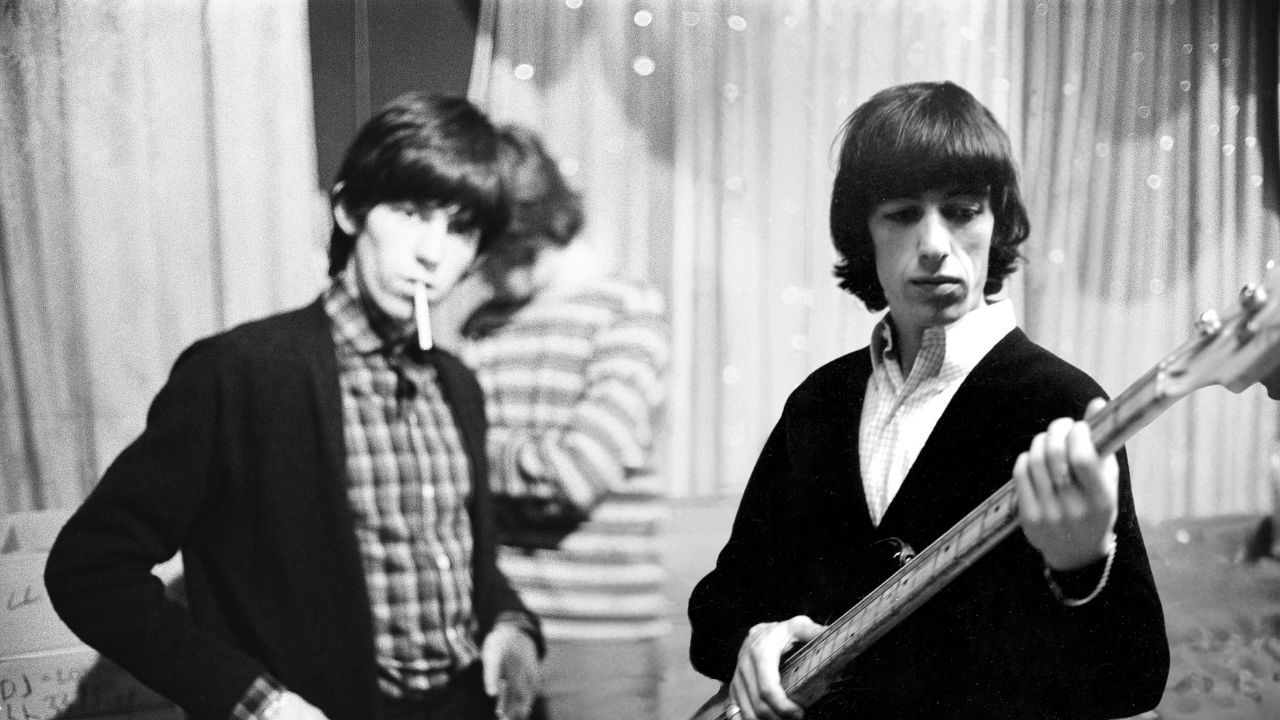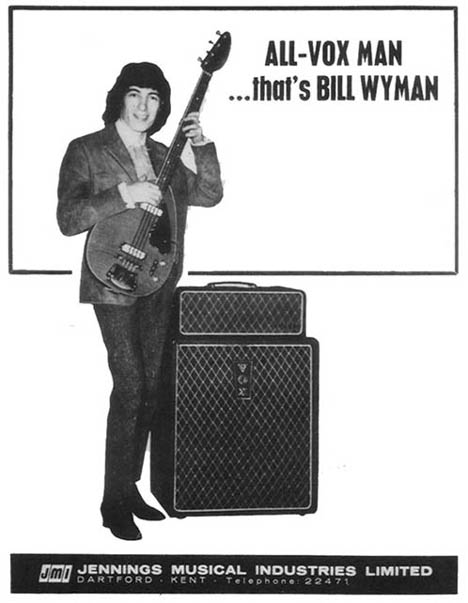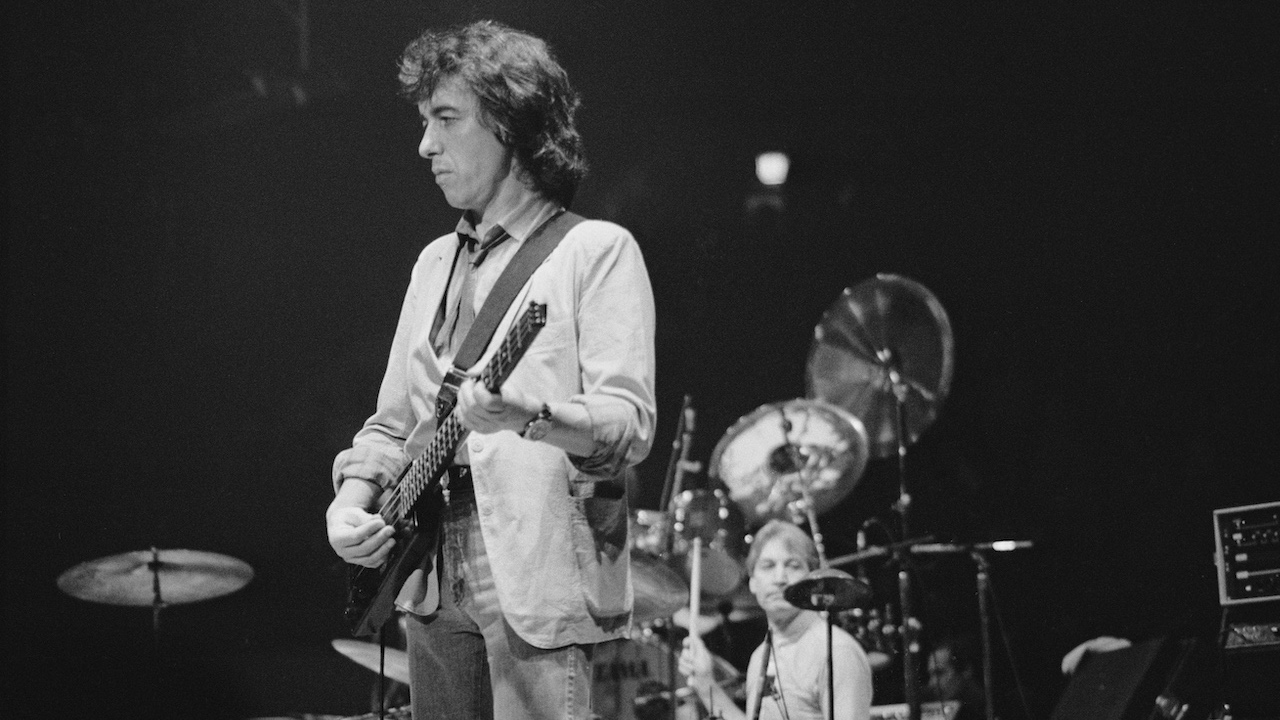“I bought it from this bloke our drummer knew. I think it was the first fretless electric bass ever”: Bill Wyman on the origins of his famous “homemade” fretless bass
The former Rolling Stones bassist used a modified fretless on every album and many of the singles up to 1975

For 30 years, Bill Wyman stood in the shadows of Mick Jagger and Keith Richards, anchoring the titanic riffs and ramshackle grooves of the Rolling Stones. “Like it or not, the bass, in my view, is there to support the rest of the band and provide a good solid underbelly to the proceedings,” said Wyman in the May ’98 issue of BP. “It’s not there to hog the limelight.”
An early pioneer of the fretless bass, “I think it’s Japanese,” is all Wyman could offer as to the origin of his “homemade“ fretless. “I was playing in an R&B band in 1961 when I bought it from this bloke our drummer knew. Before that I’d been playing bass on the bottom two strings of a detuned guitar, so I was glad to finally have a ‘real’ bass. Unfortunately, it was horrible! The body was this great big wide thing.“
Ever tenacious, to Wyman's credit he decided to make some improvements. “I’d seen Gibson and Fender bass guitars in pictures of Little Richard’s and Fats Domino’s bands, so I drew a shape like one of those on the back of my bass and I had my next-door neighbour saw it down. I bevelled the edges, took off all the paint, and put in a new Baldwin pickup.
“Still, it rattled with every note because the frets were so worn. I figured I’d just pull out all the frets and put in new ones when I could afford some. But when I pulled them out, it suddenly sounded really good! So I never put frets back in. I think it was the first fretless bass ever. I used it on every Stones album and many of the singles up to 1975. From early R&B covers like I’m a King Bee to the period of 19th Nervous Breakdown – it’s got the sound.”
Fearful of taking his “precious gem” on the road with the Stones in the early ‘60s, Wyman soon began playing short-scale, hollowbody Framus Star basses. “They were the only ones in the shop with necks as narrow as my fretless. And the boys liked the sound of them onstage; they cut through, but were still boomy. Next I moved on to a smaller Framus. It was shaped like a Les Paul bass and had a natural finish with striped wood grain.”
Although he was by then a Framus endorser, Wyman was given a brand-new Vox Bill Wyman Bass in 1965. “The trouble was they never approached me beforehand. They just appeared with this awful, spoon-shaped thing and said, ‘We want to call it the Bill Wyman Bass – we’ll give you 5%.’ I never did see any money from them, but then again I never liked their bass.”

Wyman played many more classic short-scale axes over the years, including a Gibson EB-3 (“awful sound, totally dull”), two Dan Armstrong (“a wooden one with a sliding pickup, and a Plexiglass model that weighed a tonne”), a Travis Bean (used extensively on 1978’s Some Girls), and a Fender Mustang.
Get The Pick Newsletter
All the latest guitar news, interviews, lessons, reviews, deals and more, direct to your inbox!
“Keith loved James Jamerson, and he was always saying, ‘You should play a Fender. They get such a good sound in the studio.’ But they’re simply too big for me. I tried a couple of Jazz Basses, but I ended up giving them away. So when I heard about the short-scale Mustang, I thought I’d finally be able to manage a Fender – and please Keith at the same time! It wasn’t too bad. I used it onstage a bit, but it never felt quite right.”
In 1981 Wyman raised Keith’s eyebrows again when he began playing one of the first Steinberger L-2 headless basses. “No one liked the looks of it – especially Keith, but the sound was really good. The bigger problem was that with the headstock chopped off I had nowhere to put my cigarette! We ended up gluing the top of a ballpoint pen to the end of the neck. It was a perfect fit!”

Another early piece of Wyman stage gear was his 25-watt Linear Concorde amp. “When we started out, it soon got to the stage where I needed a good valve amp. I sent off for a build-your-own Linear Concorde kit, from the back of a wonderful magazine called Radio & Wireless. I remember it had one hell of a sonic kick, but on the downside, it used to give off low-level electric shocks to anyone who went too close. At the time, we were all reckless young men and the boys loved the feeling that anyone of us might revive a free Afro hair style!”

Nick Wells was the Editor of Bass Guitar magazine from 2009 to 2011, before making strides into the world of Artist Relations with Sheldon Dingwall and Dingwall Guitars. He's also the producer of bass-centric documentaries, Walking the Changes and Beneath the Bassline, as well as Production Manager and Artist Liaison for ScottsBassLessons. In his free time, you'll find him jumping around his bedroom to Kool & The Gang while hammering the life out of his P-Bass.
“I asked him to get me four bass strings because I only had a $29 guitar from Sears”: Bootsy Collins is one of the all-time bass greats, but he started out on guitar. Here’s the sole reason why he switched
“I got that bass for $50 off this coke dealer. I don’t know what Jaco did to it, but he totally messed up the insides!” How Cro-Mags’ Harley Flanagan went from buying a Jaco Pastorius bass on the street to fronting one of hardcore’s most influential bands











